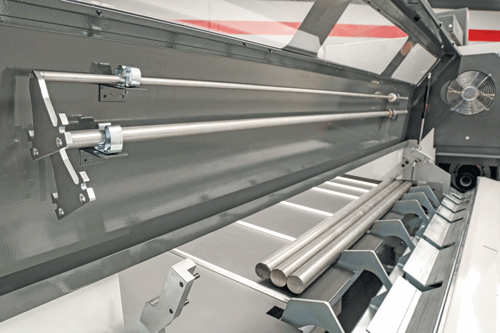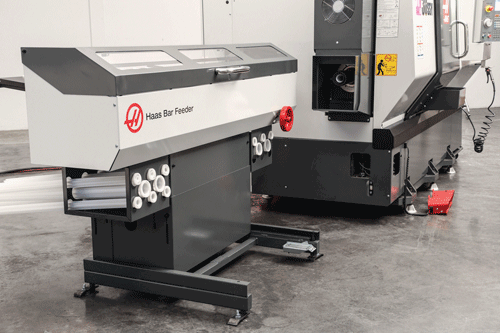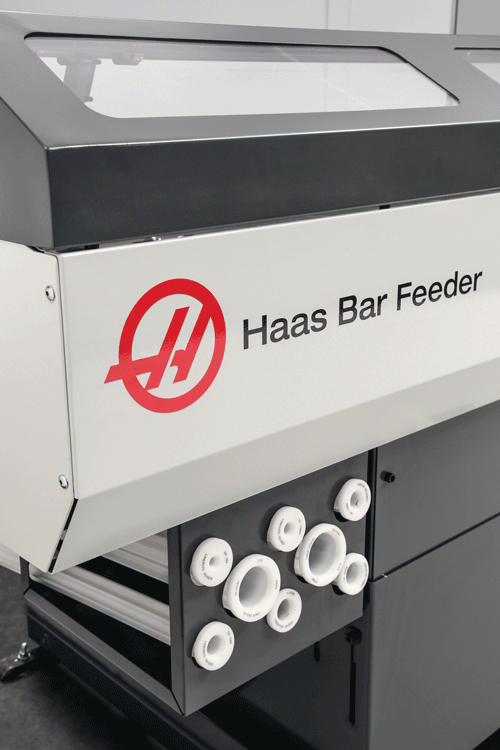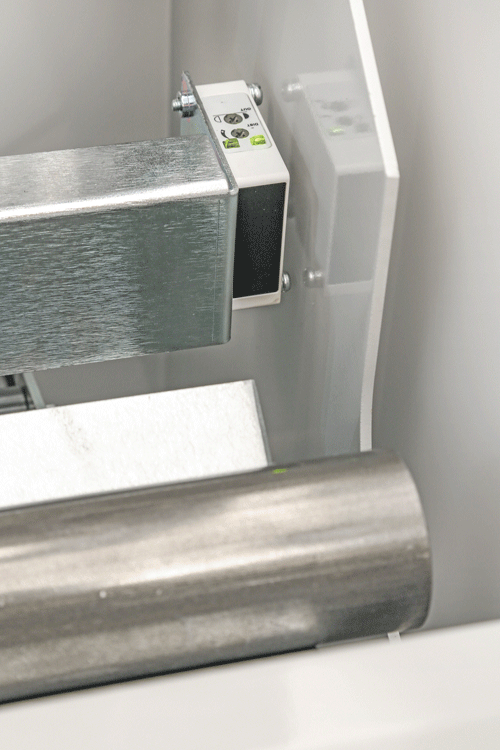Bar Feeder Automates Part Production
Designed to boost productivity through streamlined operation, Haas Automation's latest bar feeder model is built for use with Haas ST-10 through ST-35 and DS series CNC turning centers.
One of the most common automation accessories used in metalworking, the bar feeder is typically applied to turning machines to deliver a continuous supply of raw machining stock in the form of round, hex, square and extruded shapes for the manufacture of turned parts. Although a variety of design features can make one bar feeder more suitable for a given shop or application, each is engineered to provide more efficient material handling as barstock is delivered to the machine.
Haas Automation released its original bar feeder in 1999 and has made design modifications through the years to improve efficiency. The company’s latest model is designed to boost productivity through streamlined operation. Designed and built for use with Haas ST-10 through ST-35 and DS series CNC turning centers, the bar feeder connects directly to the Haas control.
Featured Content
The unit features a belt-driven trolley system that significantly speeds operation, when compared with slow push rod retract rates that can bog down cycle time. To simplify operation and speed change-overs, the push rods are easily changed without tools. The operator simply pulls back the lever, pulls out the bushing, then pushes the other end past the ball detents. Both 3/8-inch and 3/4-inch push rods are included, and they store conveniently in the mounts on the inner lid enclosure (Figure 1).
The bar feeder is designed for easy movement and adjustment. A foot pedal is provided to release the unit so that the entire body can be pushed back out of the way, providing full access to the liners within the machine (Figure 2). To get the liner out, the coupling is loosened and removed and the liner is slid out. The liners that are not being used can be conveniently stored in a tray that is attached to the front of the unit for easy access (Figure 3).
On the previous model, the height adjustment wheel was on the end of the bar feeder furthest from the machine, which made alignment somewhat cumbersome. On the new unit, the height adjustment wheel has been moved to the front, right side of the unit, allowing the operator to visually see the liner while aligning the unit. To line up a different size bar, the operator manually brings the bar into position, close enough to see what adjustment needs to be made. Then, the adjustment wheel is turned to raise or lower the bar until alignment is complete (Figure 4).
One of the most significant improvements on the bar feeder is an optical sensor (Figure 5) that provides bar measurements so that barstock lengths are always accurate and positioned correctly, even with chamfers and ragged ends. Also included are stainless steel runners (Figure 6) on the charging tray that help bars roll down to the loading area more easily. Even square and hexagonal stock glide down smoothly to the bar feeder tray.
The bar feeder uses the same interface as the original model, but now the screen includes helpful icons to tell the operator when the door is open and when the machine is out of position. When a bar is fed, the shuttle comes forward to make sure there is not already a bar in position, and then quickly retracts. A bar is then automatically loaded and fed forward, measured and loaded into the spindle. The push rod is then loaded and pushes the bar to the specified distance outside the spindle. The shuttle is retracted, and it’s ready to go.
RELATED CONTENT
-
10 Smart Steps to Take Toward Recovery
With many manufacturers facing challenges in light of the novel coronavirus pandemic, these 10 steps can help position manufacturers to find success.
-
The Many Sides of Workholding
Here's a broad look at different ways to approach workholding, from bar feeders to collet chucks to robotics.
-
Advantages of Cellular Manufacturing
Manufacturing cells are used to minimize product movement as well as materials, equipment and labor during the manufacturing process. By reducing cycle times and material handling, these cells help shops more easily meet customer demands regarding cost, quality and leadtimes.












